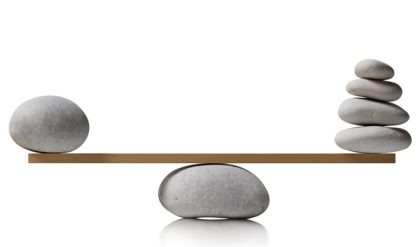There are several situations during the life cycle of a product when a design team selects a material to use for a component or a joint between components – new product development, cost reduction, improve product performance and reliability, and improve manufacturing or assembly yields. Regardless of the situation, the goals are the same – find the lowest cost material that enables the product’s performance and reliability. There are several steps to the material selection process. This article provides an overview of this process.

The performance, reliability, and cost of any product depends on the performance, reliability, and cost of its components and the joints between components. And the performance, reliability, and cost of components and joints depend on two things: 1) their physical construction and 2) the materials of which they are made. Physical construction refers to shape and dimensions. Examples of different physical constructions are shown in the figure for two different size shafts and two different types of weld joints.
Failure analysis results
So, the materials used in a product have a huge impact on the product’s success. Select materials with properties that don’t enable meeting the product’s performance or reliability requirements and be prepared to have poor sales or many returns. Select materials that are more expensive than necessary or are difficult to work with during manufacturing and assembly and be prepared to endure lower than expected profits.
These problems can be avoided by adopting a rigorous approach to the materials selection process, with an eye on selecting materials that optimize product performance reliability and cost. The materials selection process for a component or joint between components involves these steps:
- Identify the design requirements
- Identify the materials selection criteria.
- Identify candidate materials.
- Evaluate candidate materials.
- Select materials.
While each step might seem obvious, there are many organizations that do not have the structure in place to follow each step. Consequently, they end up selecting sub-optimum materials. The remainder of this article gives a brief overview of each step of the materials selection process. Future articles will provide more details about each step of the process.
Step 1: Identify the design requirements
The design requirements include the following items:
- Performance requirements
- Reliability requirements
- Size, shape, and mass requirements
- Cost requirements
- Manufacturing and assembly requirements
- Industry standards
- Government regulations
- Intellectual property requirements
- Sustainability requirements
Identifying as many of the requirements as possible is critical for increasing the likelihood of learning whether potential materials exist. For many products, some of these requirements are not applicable, making the information gathering process easier. Regardless, as the number of requirements increases, the chance of finding a set of potential materials decreases.
Step 2: Identify materials selection criteria
The materials selection criteria are specific materials properties derived from the requirements identified during Step 1. For example, for a component that must support a specific load, the minimum yield stress that is required for the component’s material can be determined. This will be one of the material selection criteria.
Step 3: Identify candidate materials
Use the materials selection criteria to rule out materials that will not satisfy all the materials selection criteria. When evaluating whether a material might be appropriate for the application, be sure to consider the materials’ range of values for the properties of interest. Do not rely upon nominal properties values.
Step 4: Evaluate candidate materials
There may be candidate materials for which there insufficient data available to indicate whether the materials satisfy certain selection criteria. These materials will have to be analyzed and tested to determine whether they do meet the selection criteria.
Step 5: Select materials
Select the materials that satisfy all the materials selection criteria at the lowest cost. Remember, cost includes the cost of the material and the cost to fabricate a component or form a joint between components.





